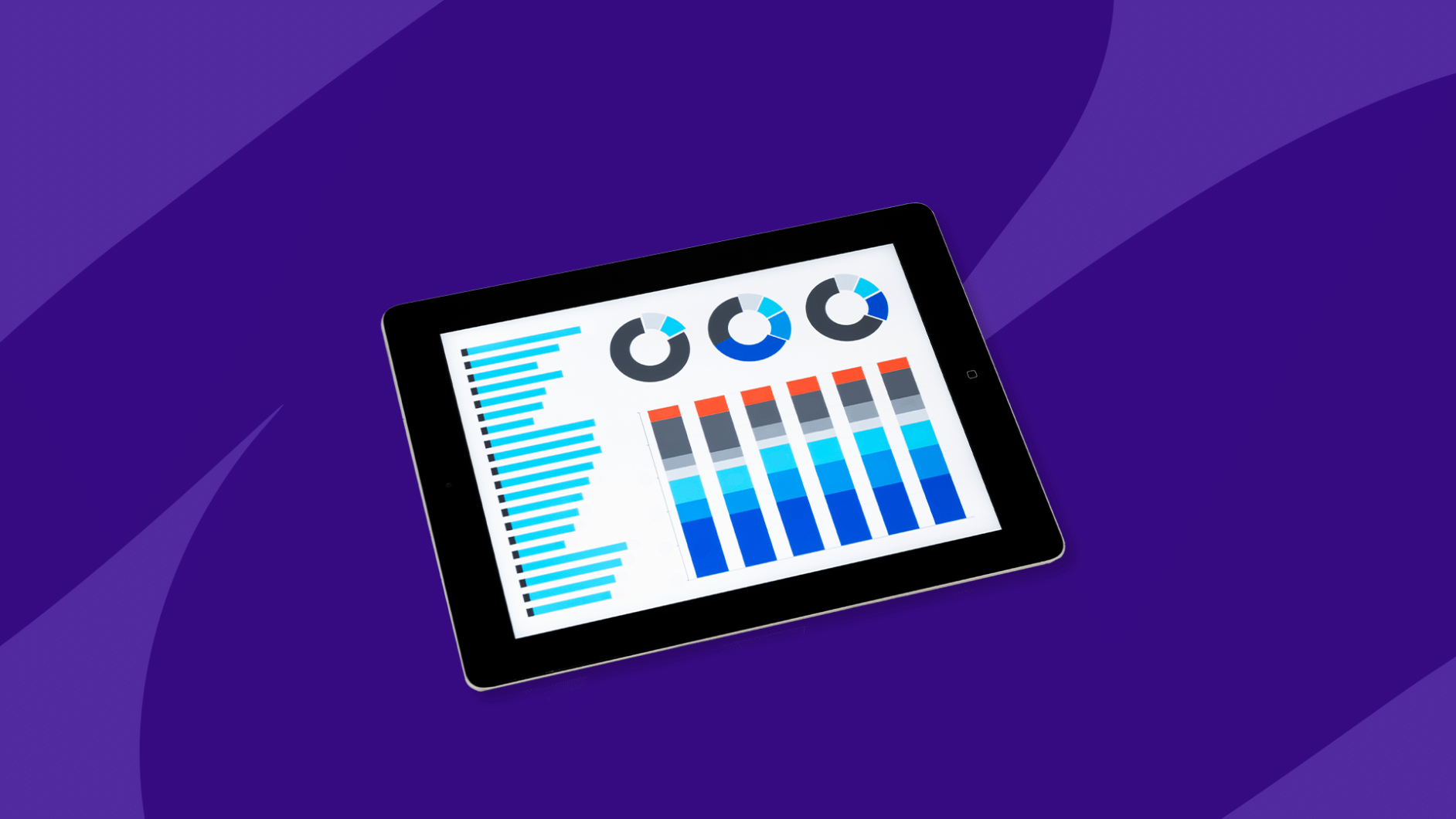What is heart disease? | How common is heart disease? | Worldwide heart disease statistics | Heart disease statistics in the U.S. | Heart disease statistics by state | Heart disease statistics by sex | Heart disease statistics by race | Heart attack/stroke statistics | Cost of heart disease | Causes, risks, and treatments | FAQs | Research
The heart is an icon, one that adorns greeting cards, appears in jewelry shop windows, or adds a special touch to an affectionate text message. It symbolizes love, passion, and commitment. And that’s because it’s our most vital organ. The heart’s significance goes far beyond emoji confessionals and construction paper creations—it’s the fist-sized engine that keeps our bodies going.
Problems with the heart mean problems for the whole body, so it’s understandable why heart disease is such a prominent public health concern. Whether we’re talking about blood pressure, abnormal heartbeats, blood vessel issues, or heart attacks, it’s important to understand the risk factors, symptoms, and conditions associated with heart disease.
RELATED: 13 signs of heart problems worth worrying about | Cardiac arrest vs. heart attack
What is heart disease?
Heart disease, also called cardiovascular disease (CVD), is an umbrella term that encompasses several different conditions that affect the heart. These include heart muscle disease (cardiomyopathy), irregular heartbeats (arrhythmia), and blood vessel issues like peripheral or coronary artery disease. Nearly half of Americans have some type of heart disease.
Most cardiovascular diseases stem from interference with the heart’s normal function. Plaque buildup, blood clots, high blood pressure, high cholesterol, and obesity can all contribute to heart disease. Many of these conditions are preventable by maintaining a healthy lifestyle and diet.
Each heart condition has different symptoms, but common warning signs include chest pain or pressure, palpitations, shortness of breath, numb or cold extremities, fatigue, and lightheadedness. A healthcare provider may ask about these conditions as part of a complete physical exam to help diagnose heart disease. He or she may also order blood tests, stress tests, an electrocardiogram (EKG), or imaging tests like an X-ray, CT scan, ultrasound, or MRI.
How common is heart disease?
- Cardiovascular disease is the world’s leading cause of death. In 2019, 17.9 million people died from CVDs, comprising 32% of global mortality. (World Health Organization, 2021)
- Heart disease is the leading cause of death in the U.S. as well, causing approximately 697,000 deaths per year. (Centers for Disease Control and Prevention, 2022)
- Approximately 121.5 million U.S. adults have some form of cardiovascular disease. (American Heart Association, 2019)
Worldwide heart disease statistics
- More than 75% of CVD-related deaths occur in low- and middle-income countries. (World Health Organization, 2021)
- The World Heart Federation predicts more than 23 million CVD-related deaths per year by 2030. (World Heart Federation, 2019)
United States heart disease statistics
- 1 out of every 5 deaths in the United States is a result of cardiovascular disease. That’s a death every 34 seconds. (Centers for Disease Control and Prevention, 2022)
- By 2035, the American Heart Association projects that more than 130 million U.S. adults will have some type of heart disease. (American Heart Association, 2018)
- High blood pressure is the more prevalent heart disease in the U.S., as almost half of the population (an estimated 116 million Americans) have been diagnosed with hypertension. (Million Hearts, 2021)
- Approximately 20.1 million U.S. adults have coronary artery disease, and 805,000 Americans have a heart attack each year. (Centers for Disease Control and Prevention, 2022)
RELATED: Blood pressure treatment and medications
Heart disease statistics by state
The top 10 states with the highest age-adjusted CVD death rate (per 100,000 population) are:
- Mississippi (245.6)
- Oklahoma (244.1)
- Alabama (237.5)
- Arkansas (222.5)
- Louisiana (221.5)
- Tennessee (212)
- Michigan (205)
- Kentucky (204.5)
- Nevada (201.3)
- West Virginia (197.8)
(Centers for Disease Control and Prevention, 2022)
And states with the highest percentage of populations with hypertension are:
- West Virginia (43.8%)
- Mississippi (43.6%)
- Alabama (42.5%)
- Arkansas (41%)
- Kentucky (40.9%)
- Louisiana (39.7%)
- Tennessee (39.3%)
- South Carolina (38.3%)
- Oklahoma (37.8%)
- Delaware (36.4%)n
(America’s Health Rankings, 2021)
When it comes to heart attacks, these states have the highest percentage of occurrences among their populations:
- West Virginia (7.5%)
- Kentucky (6.5%)
- Arkansas (6.4%)
- Alabama (5.9%)
- Tennessee (5.9%)
- Maine (5.8%)
- Oklahoma (5.6%)
- Ohio (5.5%)
- Michigan (5.4%)
- Mississippi (5.4%)
(America’s Health Rankings, 2019)
Heart disease statistics by sex
- Cardiovascular disease is the leading cause of death for both men and women in the U.S. (American Heart Association, 2019)
- In 2020, heart disease killed 382,776 men (1 in 4 male deaths) and 314,186 women (1 in 5 female deaths). (Centers for Disease Control and Prevention, 2020)
- The average age that men will have a heart attack is 65, while for women, it’s 72. (Harvard, 2016)
- Women age 45-65 who have a heart attack are more likely than their male counterparts to die within a year. Women older than 65 who experience a heart attack are more likely than men of the same age to die within a few weeks. (U.S. Department of Health and Human Services, 2020)
RELATED: Women’s heart health | Men’s heart health
Heart disease statistics by race and ethnicity
- 47% of black adults in the U.S. have some type of cardiovascular disease, along with 30% of Hispanic U.S. adults. (American College of Cardiology, 2018)
- Non-Hispanic black adults have the highest CVD death rate (208 deaths per 100,000 people), followed by white adults (168.9 per 100,000), Hispanic adults (114.1 per 100,000), and Asian/Pacific Islander adults (85.5 per 100,000). (CDC, 2019)
- High blood pressure prevalence is 56% for black adults, 48% for white adults, 39% for Hispanic adults, and 46% for Asian adults. (CDC, 2022)
Heart attack and stroke statistics
- Approximately 1.5 million heart attacks (myocardial infarctions) and strokes occur in the United States each year. (Million Hearts, 2021)
- Someone in the U.S. has a stroke every 40 seconds, accounting for one out of every 19 deaths. (American Heart Association, 2020)
- Cerebrovascular disease accounted for 7 million deaths worldwide in 2020. (American Heart Association, 2022)
- Each year, approximately 605,000 new heart attacks and 200,000 recurrent heart attacks occur in the U.S. (American Heart Association, 2020)
- In 2016, heart attacks, strokes, and heart failure caused 2.2 million hospitalizations. (Centers for Disease Control and Prevention, 2018)
- Acute myocardial infarctions accounted for 260,000 emergency room visits in 2017, and cerebrovascular disease accounted for another 492,000. (Centers for Disease Control and Prevention, 2017)
The cost of heart disease
- Between 2014 and 2015, cardiovascular disease and stroke cost the United States $351.2 billion in healthcare services, medicines, and lost productivity due to death. (American Heart Association, 2020)
- Researchers expect that CVD costs will rise to $749 billion by 2035. (American Heart Association, 2020)
- The National Institutes of Health spent more than $1.5 billion on heart disease research in 2021. (National Institutes of Health, 2022)
- 1 in every 6 healthcare dollars is spent on cardiovascular disease. (Million Hearts, 2021)
- Hospitalization for a heart attack costs a median $53,384, and bypass surgery can cost $85,891 to $177,546. (American Heart Association, 2017)
- Individuals with hypertension spend approximately $2,000 per year more than their non-hypertensive peers on health care. (American Heart Association, 2018)
Causes of heart disease
Now that we have the sobering numbers out of the way, let’s get to the root of the issue. What causes heart disease in the first place? There’s a long list of cardiovascular risk factors; some are controllable while others aren’t. For example, age, race, and family health history can put someone at a higher risk, but they aren’t personal choices. However, there are plenty of risk factors that are influenced by our lifestyle choices, such as:
- Physical inactivity
- Poor diet
- Tobacco use
- High cholesterol
- Obesity
- Diabetes
- High blood pressure
- Alcohol use
And that’s not all. A person’s environment can affect heart health, too. Social determinants like poverty, housing insecurity, education, and lack of insurance can have a significant influence on one’s cardiovascular health. Without access to resources and the ability to maintain a healthy diet, exercise, etc., a person will be more susceptible to heart disease.
How to prevent heart disease
There’s no changing family history or age, but there are still plenty of ways to keep heart disease at bay. “Diet is the cornerstone to preventing heart disease, and physical activity is another key player,” says Anthony Kaveh, MD, an integrated medicine specialist.
Keeping an eye on blood cholesterol and weight is key, too, as high cholesterol and obesity are major risk factors. Abstaining from tobacco use and excessive alcohol consumption also go a long way in preventing CVD. Healthy stress management strategies and adequate sleep put the cherry on top. Essentially, avoiding controllable risk factors just comes down to leading a holistically healthy life.
But preventive measures work differently for each person, according to Dr. Kaveh. “The key is finding strategies that resonate with each individual,” he says. “Just like how the same blood pressure medication may not work the same in two different individuals, the same lifestyle strategies may not work the same for everybody. We all bring our own histories and experiences to our health, and we need to find integrated approaches that resonate with our experiences to engage in healthy lifestyle choices consistently.”
Some strategies for heart disease prevention include:
- Incorporate a healthy diet full of fiber with vegetables, fruits, and whole grains, and limit processed foods, salt, and sugar. Men should limit alcohol intake to 2 drinks per day, and women should not drink more than 1 alcoholic beverage per day—being mindful of serving sizes of alcohol. In some cases, alcohol intake should be less (or none at all), depending on other medical conditions or medications being taken, so check with your healthcare provider.
- Lose weight, if necessary.
- Increase physical activity—adults should get at least 30 minutes, 5 times a week of moderate-intensity exercise.
- Stop smoking. Your doctor can help you through this journey, which can help prevent many medical conditions.
- See your healthcare provider regularly, ensuring that you are taking care of any medical conditions, such as high blood pressure or diabetes.
Dr. Kaveh encourages his patients that there’s a lot of value in small lifestyle alterations. “Our small choices every day have a tremendous cumulative impact,” he says. “More importantly, it appears that it is never too late to reap the benefits of a heart-protective lifestyle.”
Use the SingleCare prescription discount card
Treating heart disease
Of course, CVD treatments vary based on the condition and its severity, but several medications can treat common heart disease causes. For patients with high cholesterol, healthcare providers might prescribe statins, a drug class that lowers LDL (“bad cholesterol”), like Lipitor (atorvastatin) or Crestor (rosuvastatin). For nearly half of Americans with hypertension, beta blockers and ACE inhibitors can be useful in lowering blood pressure. Beta blockers like Tenormin (atenolol) block the action of adrenaline to slow the heart, treat chest pain, lower blood pressure, and help prevent recurrent heart attacks. ACE inhibitors like Lotensin (benazepril) lower blood pressure by relaxing and widening blood vessels. To help prevent blood clots, healthcare providers may also recommend aspirin, clopidogrel, or warfarin.
More severe or life-threatening conditions may require surgical procedures like bypass surgery, pacemaker insertion, or stent placement.
RELATED: Lipitor details | Crestor details | Atenolol details | Lotensin details | Aspirin details | Clopidogrel details | Warfarin details
RELATED: ACE inhibitors vs. beta blockers: Which is right for you?
Heart disease questions and answers
What percentage of the population has heart disease?
The American Heart Association (AHA) estimates that 48% of the U.S. population has some type of heart disease.
What percent of deaths are caused by heart disease?
According to the CDC, heart disease is the number one cause of death in the US. Heart disease caused about 697,000 deaths in the US in 2020.
What country has the highest number of deaths from cardiovascular disease?
The American College of Cardiology reported in 2020 that the highest number of deaths from cardiovascular disease occurred in China, followed by India, Russia, the United States, and Indonesia.
What countries have the lowest number of deaths from cardiovascular disease?
France, Peru, and Japan had the lowest rates of deaths from cardiovascular disease.
Is heart disease increasing or decreasing?
According to the American Heart Association, worldwide deaths related to cardiovascular disease increased 17% in the last decade, and worldwide cases of cardiovascular disease increased by 26.6%. As for the United States, cardiovascular disease continues to be the leading cause of death.
What is the mortality rate of heart disease?
Cardiovascular disease causes 1 out of every 5 deaths in the U.S. In 2020, about 697,000 people in the US died from heart disease.
What percent of heart attacks are fatal in the U.S.?
Around 10% of heart attacks are fatal. But the fact that one heart attack occurs every 34 seconds in the U.S. means that they still cause numerous deaths. In 2020, coronary heart disease caused approximately 697,000 deaths in America.
What is the leading cause of heart disease?
An accumulation of cholesterol on artery walls, called atherosclerosis, is the most common cause of cardiovascular disease. Atherosclerosis can be caused by a number of factors including high blood pressure, high cholesterol and triglycerides, saturated fats in the diet, smoking, and lack of exercise.
How long has heart disease been the leading cause of death?
Heart disease isn’t a new problem in the United States. It’s been the nation’s leading cause of death since 1921, according to a 2006 study.
What are the early signs of heart disease?
Pay attention to chest pain/discomfort/pressure, shortness of breath, fatigue, coughing/wheezing, pain in the neck/throat/jaw, and general weakness, as they can all be heart disease indicators. Not everyone will have symptoms, though—in some people, the first sign of heart disease is a heart attack or stroke.
What are the different types of heart disease?
Cardiovascular disease is an umbrella term that includes all conditions that affect the heart and blood vessels—including coronary heart disease, cerebrovascular disease, and atherosclerosis. Heart disease is one type of cardiovascular disease. Although all heart diseases fall under the umbrella of cardiovascular disease, the reverse is not true—not all cardiovascular diseases are heart disease.
Heart disease research
- Heart disease and stroke statistics 2019 update, Circulation by the American Heart Association (AHA)
- Cardiovascular diseases (CVDs), World Health Organization (WHO)
- Heart attack and stroke statistics, AHA
- Heart disease fact sheet, Centers for Disease Control and Prevention (CDC)
- Facts about hypertension, CDC
- The heart attack gender gap, Harvard
- Heart disease and women, Office on Women’s Health
- Costs & consequences of cardiovascular disease, Million Hearts by the CDC
- Racial and ethnic disparities in heart disease, CDC
- One size does not fit all: the role of sex, gender, race and ethnicity in cardiovascular medicine, Cardiology Magazine by the American College of Cardiology
- Vital signs: state-level variation in nonfatal and fatal cardiovascular events targeted for prevention, Million Hearts by the CDC
- National hospital ambulatory medical care survey 2017, CDC
- Uninsured patients faced devastating hospital bills for heart attack, stroke, AHA
- Trends in health care expenditures among US adults with hypertension: national estimates, 2003–2014, Journal of the American Heart Association
- Heart disease, America’s Health Rankings by the United Health Foundation
- Estimates of funding for various research, condition, and disease categories (RCDC), National Institutes of Health (NIH)
- Estimated Hypertension Prevalence, Treatment, and Control Among U.S. Adults, Million Hearts
- Heart Disease Mortality by State, CDD
- Health, United States Spotlight: Racial and Ethnic Disparities in Heart Disease, CDC











